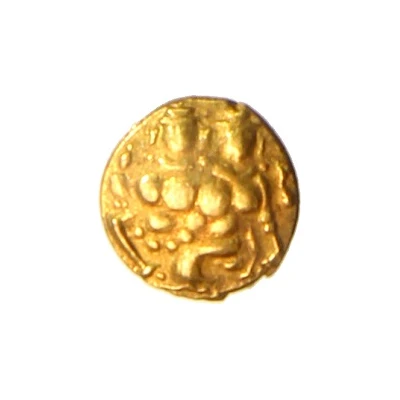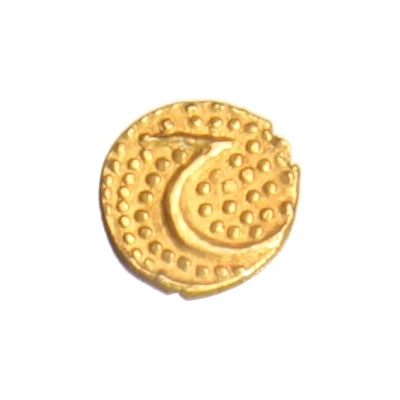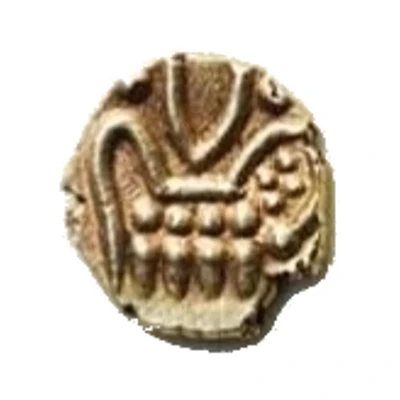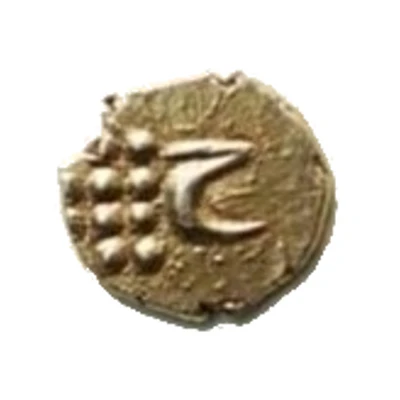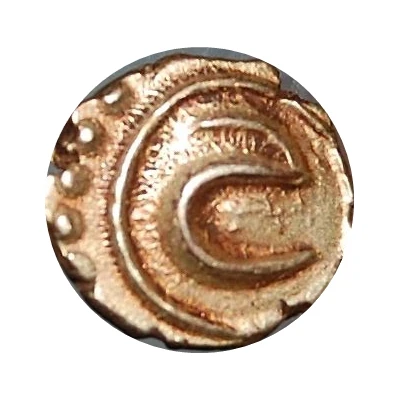
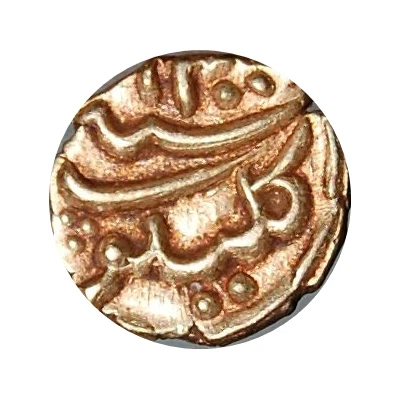

© Parimal (CC BY-NC-SA)
1 Fanam - Tipu Sultan Kalikut
| Gold | 0.35 g | - |
| Issuer | Kingdom of Mysore (Indian states) |
|---|---|
| Type | Standard circulation coin |
| Years | 1198-1215 (1784-1786) |
| Calendar | Islamic (Hijri) |
| Value | 1 Fanam (1⁄32) |
| Currency | Rupee (1565-1799) |
| Composition | Gold |
| Weight | 0.35 g |
| Shape | Round |
| Demonetized | Yes |
| Updated | 2024-10-05 |
| Numista | N#55526 |
|---|---|
| Rarity index | 87% |
Reverse
Mint name and Date
Zarb Kalikut
ضرب کليکوت
Dots for “ب” and “ت” are combined as three dots. It was a common practice among Indian rulers to break away from Urdu calligraphy norms because of the limited space on the coins.
Comment
Often there’s confusion among collectors about the later dates being incorrect e.g. 1786AD is mapping to both 1200 AH and 1215 AH. However, last one indicates Anno Mauludi(AM) to Gregorian mapping instead of Hijri to Gregorian. Tipu introduced his own calendar system after adopting Hijri calendar for the earlier part of his reign called Mauludi. I believe he made that change in 1786AD or 1200AH which he calculated as 1215 AM. This is also when he started minting fanams with numerals from right-to-left. A very popular confusion where folks consider some earlier fanams as fake or vice versa. There’s a good explanation in this article:https://toshkhana.wordpress.com/2014/09/19/dawn-of-a-new-era-tipu-sultan-and-his-mauludi-calendar/
Interesting fact
One interesting fact about the 1 Fanam - Tipu Sultan (Kalikut) 1198-1215 (1784-1786) coin from the Kingdom of Mysore is that it was minted during the reign of Tipu Sultan, who was a prominent ruler of the Mysore Kingdom and known for his military campaigns against the British East India Company. The coin's design features an image of Tipu Sultan on one side and an inscription in Persian on the other side, which translates to "Tipu Sultan, the King of Mysore, the Just Ruler." This coin is a rare and valuable collector's item, and its gold content makes it even more valuable to collectors and historians.
